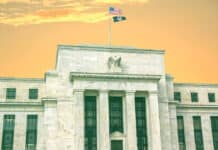
An extract from The Art of Boring, Mawer Investment Management Podcast Episode 196, with Brian Carney, Portfolio Manager of the Mawer Global Credit Opportunities Fund. The podcast covered the current state of credit markets, including key risk indicators and the evolving landscape of private credit markets.
Q. What is the current state of markets? What’s happening with spreads and defaults?
Despite the conflicts, natural disasters and trade uncertainty with tariffs, there’s smooth sailing in markets. Spreads are tight and the average long term high yield default rate is 3% according to JP Morgan, this year it’s at 2.7%.
I see two problems.
1. Convergence
There are large pools of capital chasing lower quality borrowers. Companies that would have defaulted haven’t because there’s more capital around. High leverage and payment in kind relives market stress. These companies would have defaulted under different market conditions.
2. Complacency
- Markets are ignoring serious signs
- Politicians trying to manipulate interest rates and pressure the US Fed to cut too much too soon
- Inflation concerns regarding tariff policy
- The credit quality of the US government, increasing debt and deficits and unpredictable policy
- Hidden leverage in private credit funds and leverage in strategic risk transfers in the insurance industry
Carney suggests that in a different era, any one of those four signs would cause concern, but markets are willing to overlook the concerns. So, what should investors do? He believes that investors are not being rewarded enough for the risk involved. So warns investors,
‘Do not reach for yield, protect capital. Look to earn a reasonable return and wait for the next dislocation’.
Q. Spreads are benign and can stay benign for a long time, shifts can be quite quick. Can you please explain the warning signals?
When a shift happens a number of these things tend to happen all at the same time. If you look back to the GFC in 2008, Covid and 2020, you will see:
- Hedge fund or leveraged player liquidation by prime brokers.
- These things don’t happen in isolation, so then you start to look at the inter-connectedness of banks and their broker/dealers subs. All of these entities provide short term funding to each other. That short term funding is reduced or evaporates quickly.
- Then you get rumors of commercial banks in trouble, counterparty credit reductions. All of those things happen in the early days of a crisis. They tend to precipitate:
- widening credit spreads
- widening bid/offer (buy/sell) spreads
- Reduction in trading by broker dealers
- Flight to quality in government bond markets
- Then you’ll see high quality issuers draw down on bank lines because of uncertainty and if they are able, they’ll do bond issues that they might not otherwise have done, again to shore up liquidity.
Also read: Yield Curve Steepens on Powell’s Dovish Tilt
If you see three or four of these things happen all at once, you’re close to or possibly in a full-blown crisis and ten you’ll start to see central banks react and make policy statement central banks will shoring up liquidity for financial intermediaries by buying securities in the market place.
When that happens you know you might be closer to the end of the crisis, than the beginning of the crisis.
During the global financial crisis (GFC) all of those things happened in 12 -18 months.
During COVID they happened in a couple of weeks.
Those crisis’ seem to be getting shorter and more dramatic and central banks seem to be willing to act much more quickly to stabilize markets and restore confidence.
Markets can remain euphoric or irrational, depends on your perspective and credit spreads can remain tight for long periods of time but that inevitable dislocation either incinerates capital for those over-extended or creates an opportunity for capital appreciation for those who are allocated prudently going into the crisis.
During COVID, the US Fed took intervention to a new level. They were willing to buy corporate credit and high yield. They might behave differently in the next crisis but they have set a precedent that is difficult to walk back from. There are blurring lines between politics and central banks, so they’ll have to use what’s been used in the past.
Q. What are covenants and why do they matter?
Bondholders are lenders and covenants are clauses that impose certain obligations on borrowers. An example is regular financial reporting, this is known as an affirmative covenant.
An example of a restrictive covenant is one that limits future additional debt such as Debt/ EBITDA and this is known as a negative covenant.
Covenants can also deem what constitutes default events. That is when a lender can step in and seize assets and realise value. There can be big disparities between lending documents and you need to look at covenant packages.
Over the last decade, there have been fewer covenants and fewer financial tests. That’s where you get convergence and lending to high yield. You need to know your legal remedies and where your investment sits in the capital structure.
Covenants that are crafted well, put up guard rails. But when they are too lenient, all those protections that lenders should have disappear.
We ask, “What could a borrower do that leaves us exposed? Are we being compensated in yield for taking risk and giving up a protection or two?”
Q. Can you please give us an update on the private credit market, trends and versus the public market?
Few markets have received as much attention or capital over the last few years than private credit markets. Investors have been lured by the promise of high returns and the comfort or notion of reduced volatility and they’ve moved out of traditional fixed income. It’s so popular and so much attention has been created, by a proliferation of credit managers that all claim they have unique access to product and a black box to extract value.
Let’s recap private credit market characteristics:
- No credit ratings
- Narrowly distributed, just one to two buyers so there’s no prospectus
- No external pricing source, typically
- Private company borrowers or taken private by a sponsor
- Most employ leverage and there’s often hidden leverage which can amplify or erode returns
In summary, the market is high yield, has no transparency, no liquidity and higher fees and can employ leverage. Add all these risks and you should be being compensated more than high yield or quasi public markets.
Now there’s a push to distribute to high net worth or retail investors. Having talked to them over the years, they were not comfortable with high yield and shouldn’t be comfortable with private credit.
Retail investors need to think about their risk framework and the characteristics of private credit and along with their financial advisor, if they have one, whether it is suitable.

































